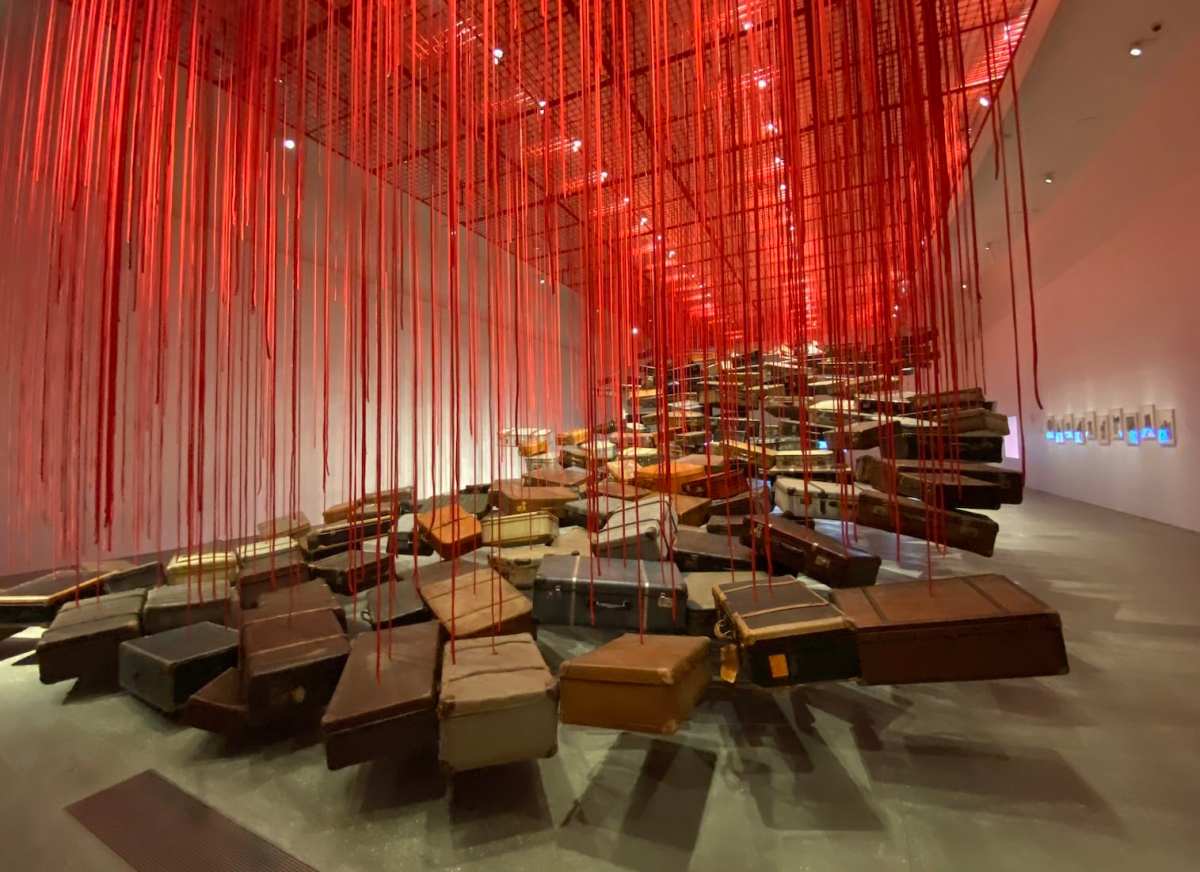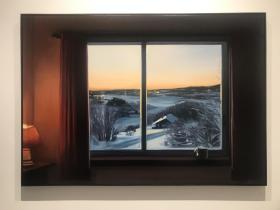This is the exhibition that nearly wasn’t. The day after curator Mami Kataoka, (Director, Mori Art Museum, Tokyo) invited artist Chiharu Shiota to create a major touring survey exhibition of her work in 2017, Shiota was diagnosed with cancer.
She underwent aggressive chemotherapy, only to emerge from her battle as our world was starting to shut down with the coronavirus pandemic. The exhibition managed to open at Tokyo’s Mori Art Museum in 2019, and briefly travel to Busan, Korea, before it was packed up and stored.
Almost two years to the day, its much-anticipated showing at Brisbane’s Gallery of Modern Art (GOMA) – and Shiota’s equally anticipated return to Australia, where she studied in the early 1990s – The Soul Tremble has opened with both Shiota and Kataoka in attendance.
It is the largest and most comprehensive exhibition of the globally celebrated artist, expanded for its Brisbane run. Shiota has delivered over 300 exhibitions and biennale installations across her career; 27 projects in 2022 alone. What connects them all is a sense of humanity.
Becoming more: an Australian legacy in an international career
Now Berlin-based, it is without doubt that Shiota’s career started in Australia, at the Canberra School of Art (1993-94), at a time when the world was coming to terms with installation art and Australia was starting to open its eyes to Asia (the first Asia Pacific Triennial was staged in 1993).
As visitors enter The Soul Trembles exhibition, they encounter documentations of her earliest works from Canberra, among them Becoming painting (1994), which pinpoints a key moment. Shiota doused herself in red enamel paint, effectively moving from painting to becoming a painting, and her first step towards performance art.
She says the paint burnt her skin and stained her body for six months, and she had to cut her hair. It was followed by Accumulation (1994) her first installation using string – a material that would come to define her career.
I wanted to make a line in the air, drawing in the air.
Chiharu Shiota
Shiota left Canberra in 1999 to pursue further study in Germany under Polish artist Magdalena Abakanowicz (1930-2017), or so she thought. But she had confused Abakanowicz’s name with performance artist Marina Abramovic. Working with Abramovic would be the next big impact on Shiota’s work, allowing her a freedom that moved beyond gender. This universal notion would come to underlie her major thread installations moving forward.
The Soul Trembles features seven of Shiota’s intricately hand-woven, room-sized installations in red and black thread. Usually, gallery goers are lucky to see just one.
Exclusive to Brisbane is also a new installation (which will remain in the collection), A question of perspective 2022, drawing on her memories of travelling by bus across Australia’s vast landscape, the endless outback skies, and a visit to Uluru.
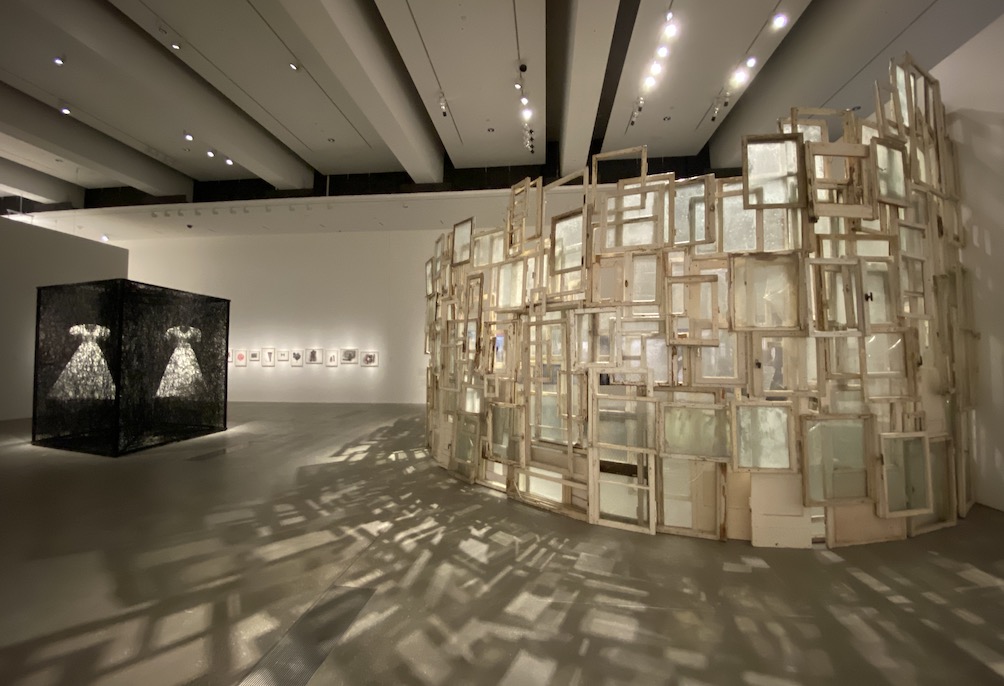
Central to a gallery is a desk and chair, with a whirlwind of blank paper weightlessly picked up by a web of strings. It responds to the curvature of the earth, and the movement of celestial bodies.
There is also a new project for the Children’s Art Centre, and a video work filmed in Brisbane in 2019 just prior to COVID lockdowns. In it she questions children in a very direct way: ‘Where is the soul? “What is the soul?’
Threads of humanity
Many blockbusters today riff off that full-sensory, immersive quality – to make the art experience palpable for viewers. Words that have been used to describe Shiota’s exhibition this past week include ‘seducing’, ‘enchanting’, ‘compelling’ and ‘mesmerising’ – and is all that and more.
The exhibition takes viewers on a journey that moves from the intimate to the expansive, from aspects of Shiota’s career that are perhaps less known – her early performance documentations and theatre works – to her much loved woven rooms that seemingly allude to space itself.
For example, in her installation In Silence (2002/2019), black strings weave their way out of a burnt baby grand piano, and like smoke, seems to diffuse and evade definition. Many of Shiota’s works hinge on intangible concepts and emotions, such as silence, absence, anxiety, memories and dreams.
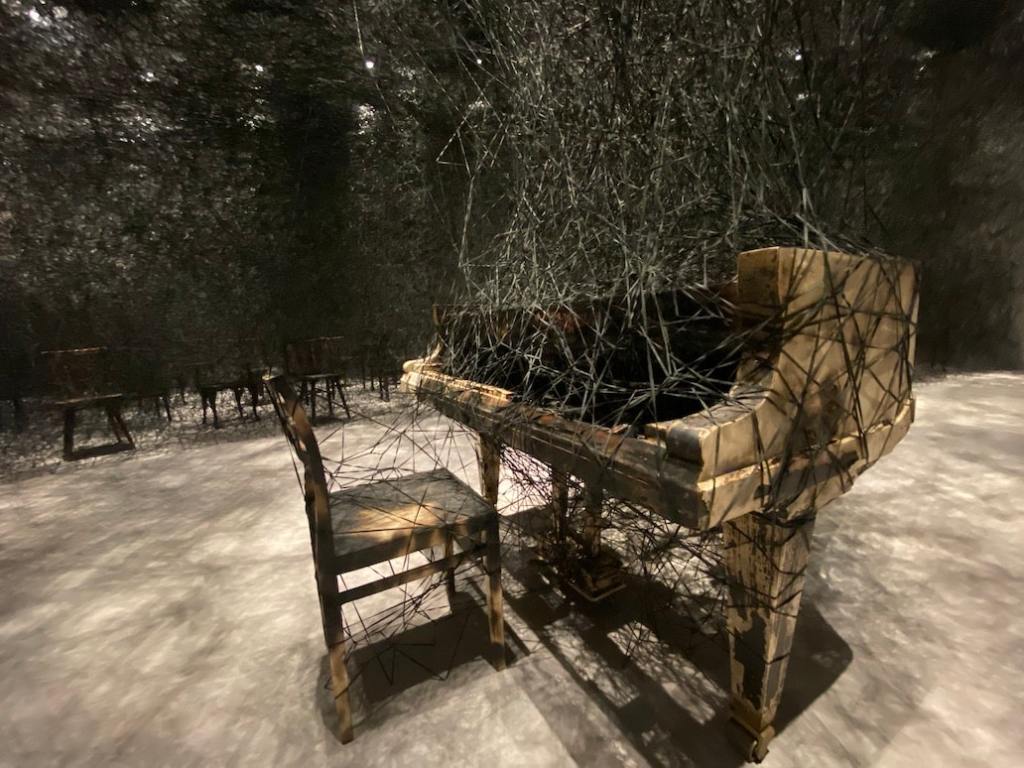
Standing within this work one can almost evoke the sound of the piano and the smell of the smoke. Shiota has taken a powerful childhood memory of a neighbour’s house fire, and turned it into a universal expression of loss that leaves space for audiences to find their own connections.
She says of the piece: ‘There are things that sink deep into the recesses of my mind, and others that fail to take either a physical or verbal form, no matter how hard you try, but they exist as souls without a tangible form.’
Arriving in Berlin, Shiota moved nine times in three years. ‘When I woke up I would not know where I am.’ That feeling of displacement and relocation sits deep within Australian narratives also – emotions that are captured in the installation, Where are we going? (2016/2019).
Here, a flotilla of boats are suspended by white strings, all interconnected but neutral, while in the main entrance hall, visitors enter the exhibition via the dramatic work, Uncertain Journey (2016/2019), which again uses the boat motif but places the emphasis on an enmeshed web of red threads. Audiences move under this work rather than around it, cocooned in the emotions it triggers.
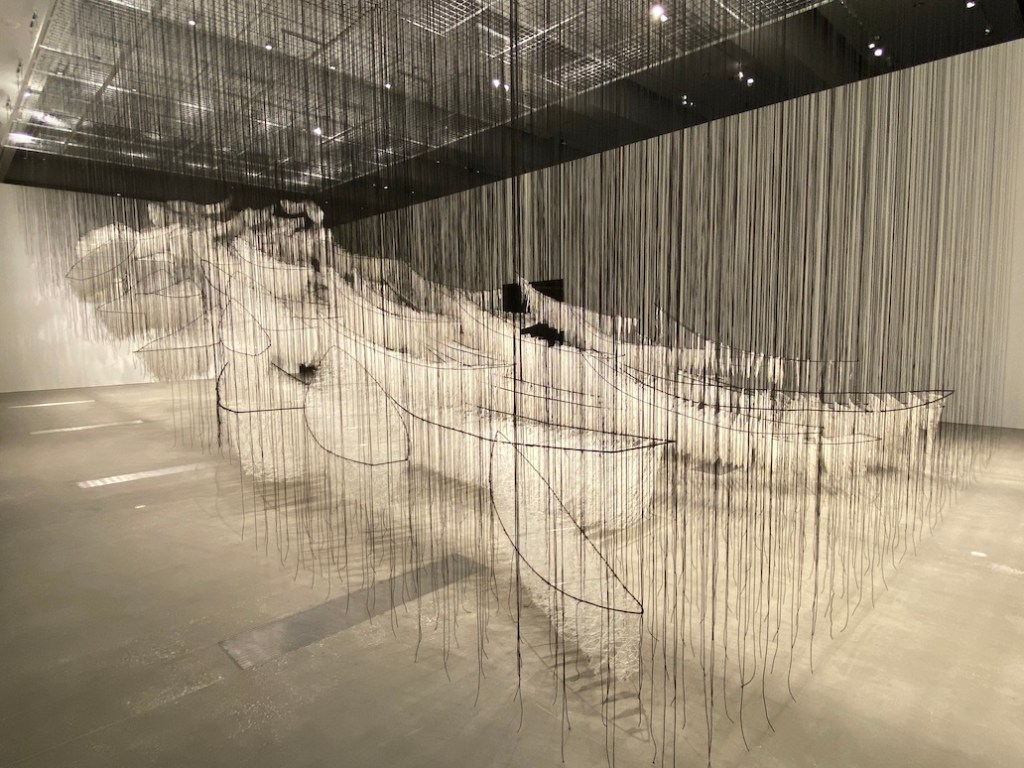
This spatial play of immersion – of embedded intimacy yet removed awe – is picked up again in another major work, Accumulation: Searching for the Destination (2014/2021), where old suitcases hover in a ramp formation from shin to head height, filling the volume of the gallery. Visitors are able to walk underneath them, bathed in their shadows and imagining the memories they hold – both tangible and intangible, silent and yet speaking volumes.
The further you drift and the more you miss, the more you arrive at a place that allows you to stare hard at yourself, anew.
Chiharu Shiota
This exhibition is laden with a sense of humanity, and pulls from within us a range of human emotions, offering a connection with a dimension much larger than our own existence, and evoking questions of our own soul and fragility.
At the keynote talk over the opening weekend of the exhibition, Shiota said: ‘I was thinking a lot about death and the soul when preparing this show, and the separation of the physical body and the soul.’
QAGOMA Director Chris Saines added: ‘This is a body of work that responds to our most private thoughts, things felt not seen, by releasing them into objects or works made with artistic courage and imaginative ambition. What results is an abiding spiritual beauty, pathos and wonder – [art] works that, in extremely slow time, invite us to give pause to the correspondences between our deeper selves and the universe.
‘The trembling of the soul may well be inexpressible stirrings of the heart.’
Chiharu Shiota: The Soul Trembles is showing at the Gallery of Modern Art, Brisbane until 3 October.
Curator: Mami Kataoka, Director, Mori Art Museum, Tokyo.
Producers: Queensland Art Gallery | Gallery of Modern Art in collaboration with Mori Art Museum, Tokyo.
